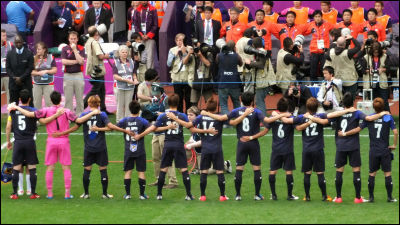The birthplace of football Why did Britain lag behind in the football world for a long time?

ByJuanedc
Mr. Charles Leep is also known as "father of football statistics" who brought a statistical view to football. Mr. Leap, who was born in England, the birthplace of football, said, "He has made only one big mistake, which made football in the UK sluggish for a long time," and everything Analyze news siteFiveThirtyEightPointed out.
How One Man's Bad Math Helped Ruin Decades Of English Soccer | FiveThirtyEight
http://fivethirtyeight.com/features/how-one-mans-bad-math-helped-ruin-decades-of-english-soccer/

In 1950, famous for summarizing football related statistical dataOpta, "Total Shot Ratio (TSR)" which determines how much the shot to the goal is kicked during the game, "Expected Goals" showing the expected value of the goal, etc. Football There was no related statistical data. However, Mr. Leap said "Swindon Town FC"We gathered in all matches of the season of the season, collected game data and created statistical data independently. In addition, there were no cameras to capture soccer players during the game from all angles more than 60 years ago, Mr. Leap gathered and gathered spatial information such as how the ball moved.
From the data collected, Mr. Leap derives the conclusion that "most goals in football arise from less than three passes before shoot." And Mr. Leap decided on guidance based on the conclusion that he derived, that is, in order to win the game, reduce the number of passes and the time to hold the ball, and prevent the opponent's attack quickly carry the ball to the other goal quickly It seems that he began to think that he should do simple soccer. Mr. Leap's ultimate tactic is to use long balls "Kick And Rush"something like. When BBC interviewed Mr. Leap in 1993, he said "If the team maintains the play so that they do not pass more than three while playing football, the probability of winning the game will be dramatically improved" I commented.
And probably this tactic of kick-and-rush was a "sports strategy that can be implemented immediately" from the "data collection at the next generation level" that first appeared in history. Also, Mr. Leap got the opportunity to tell many influential people his ideas. Still it took several decades to spread Mr. Leap's derived tactics, but in the 1980's Kick And RushWimbledon FCIt is adopted as "Successful. After that, they also entered into the ears of Mr. Graham Taylor and Charles Hughes who were the senior executives of the Football Association of England, and the tactics that heavily use long balls changed to the official policy of the England Football Association.

ByJames Boyes
The problem is that Leap's theory had a fatal flaw. In that the defect is concentrated on the percentage of "the goal born by consecutive passes of various lengths", instead, the probability of "a scene where a goal is likely to be born by a continuous pass" is brought out It should have been, FiveThirtyEight points out. Of course, a lot of goals in football are born from "short pessions (timing when not much time has passed since robbing the ball)", and football is basically caused by frequent occurrence of defense change and short pessition It is also a sport to be established. It is obvious if you count the number of consecutive play by the same team during the match, and you can see that from the short pessions the overwhelmingly many goals are born. However, it is equal and "few passes lead to a goal" is not.
On the contrary, there is statistical data that the probability that the team will take the goal will increase if the pass success rate is high. This statistical data shows that raising the pose, which is the opposite of Leap's theory, is important in depriving the goal. There is an obvious relationship between the time the team holds the ball, that is, the number of "Position" and "Shot within the frame", which can be said to be directly linked to the team's score and grades. Modern analysts have found that pessions play an important role in creating opportunities for attacks. And it has also become apparent that moving to a position that is susceptible to pass before receiving the ball is greatly related to maintaining the pose.

ByGabriel Molina
However, this is not entirely bad for Leap. It was held in England in 1992UEFA EURO '92And in 19941994 FIFA World CupFiveThirtyEight pointed out that England should have noticed the mistake at the time that he could not win.
Mr. Leap's theory was wrong, but Mr Leap's stance of "bringing in statistical aspects to football" itself was correct. In fact, statistical data is being used by many national teams and club teams.
Related Posts:
in Note, Posted by logu_ii







